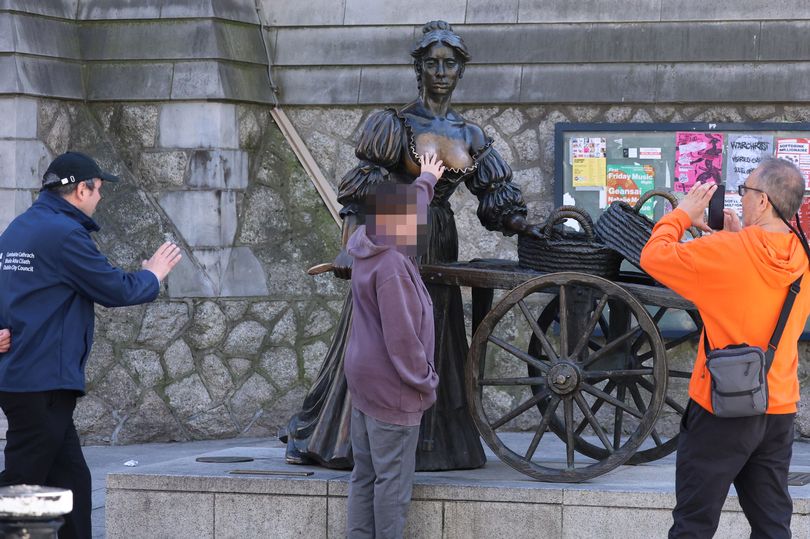The Molly Malone Statue Faces New Challenges
The iconic Molly Malone statue in Dublin has become a focal point of controversy due to the persistent behavior of tourists who rub its breasts for good luck. Council officials have admitted that this practice is deeply ingrained among visitors and are now seeking more permanent solutions to protect the historical monument.
Dublin City Council recently abandoned the idea of posting stewards at the site, as they found that the behavior resumed once the marshals were no longer present. Instead, the council is exploring alternative methods, such as installing flower beds around the base of the statue, to deter further inappropriate touching.
The tradition of rubbing the statue’s chest is believed to have originated from a tour guide in 2012. Over time, the constant attention has caused the bronze surface to become discolored, particularly on the chest area. However, the council has confirmed that plans are underway to restore the statue to its original condition.
In April, a pilot program was launched where stewards patrolled the area around the statue for a week. During this period, they intervened when tourists attempted to touch the statue. Ray Yeates, an Arts Officer with Dublin City Council, expressed concerns about the safety of people climbing onto the plinth to interact with the sculpture.
When questioned about the effectiveness of the pilot program, a council spokesperson said: “The stewards were in place for one week in May. When approached not to touch the statue, people were generally cooperative, but without stewards the behavior returns and is ingrained apparently as part of your visit to Dublin.”
The spokesperson also noted that tour guides played a role in encouraging their groups to avoid touching the statue. Despite these efforts, changing public behavior remains a challenge, prompting the council to look into other protective measures.
In addition to the physical restoration of the statue, the council has acknowledged the need to address the cultural implications of the behavior. Emails obtained through a Freedom of Information Request revealed a divided public opinion. Some residents argued that the decision to protect the statue was based on extreme views, while others expressed concern over the sexualization of the monument.
One email from a young woman highlighted her distress at seeing the statue being treated in a degrading manner. She described the act as a harmful representation of how the city values its female historical figures. Another email criticized the practice as a “really awful depiction” of Dublin’s treatment of women.
The ‘Leave Molly Alone’ campaign, led by singer-songwriter Tilly Cripwell, has also gained traction, urging the public to stop molesting the statue. This movement reflects growing awareness of the need to respect historical monuments and the figures they represent.
As the council continues to explore ways to protect the Molly Malone statue, the debate over its treatment highlights broader conversations about the preservation of cultural heritage and the impact of tourist behavior on historical sites.







